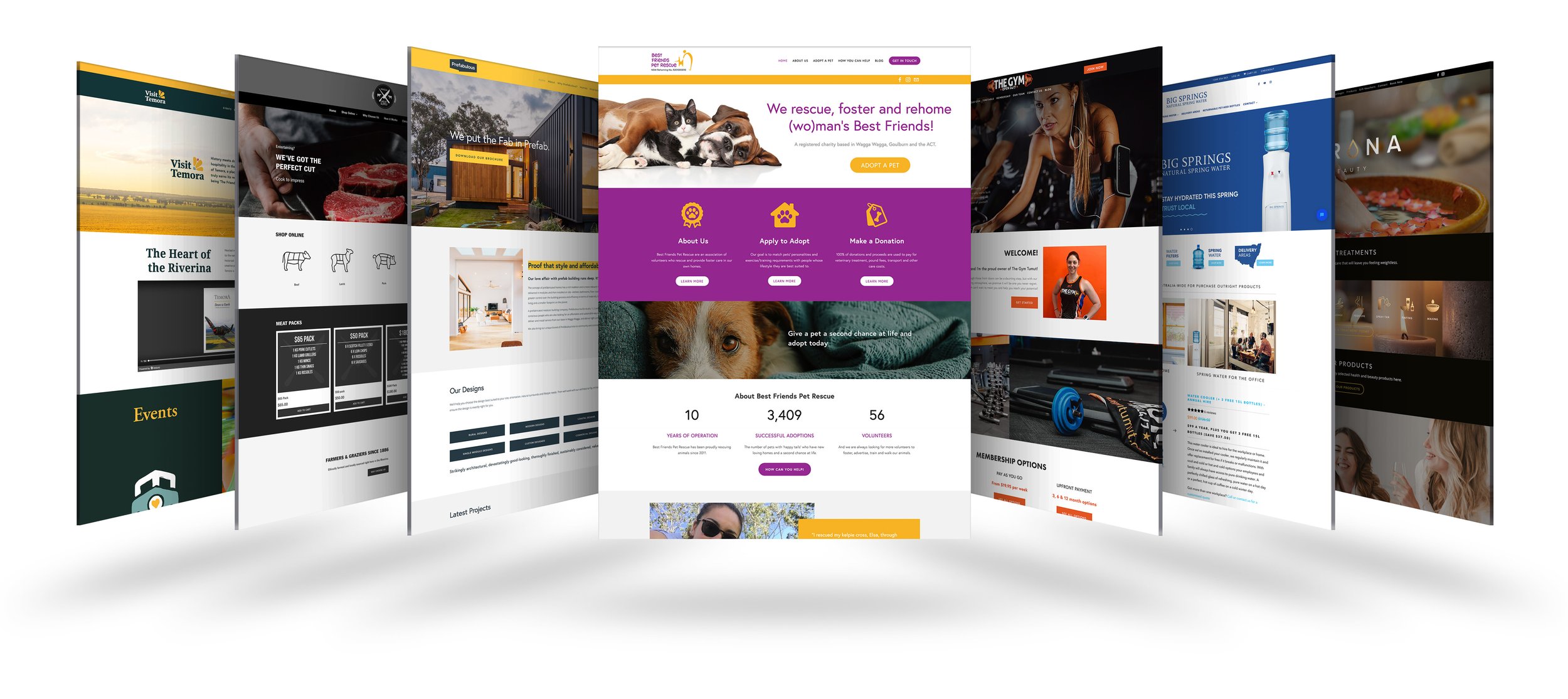Full-Service Website Design Solutions from Concept to Launch
Full-Service Website Design Solutions from Concept to Launch
Blog Article
Top Tips for Creating an Impactful Website Style That Converts
In today's digital landscape, the importance of an impactful site design can not be overemphasized, particularly when it concerns converting site visitors into customers. To achieve this, one have to think about a variety of aspects, including recognizing the target audience, focusing on user experience, and enhancing for mobile platforms. In addition, the critical use of compelling call-to-actions and a distinct aesthetic hierarchy plays a critical function in guiding users via their trip. As we explore these crucial components, it becomes evident that the success of your site rests on greater than just looks; it calls for a thoughtful strategy to layout and capability.
Understand Your Target Market
Comprehending your target audience is basic to efficient site design, as it prepares for producing an engaging customer experience. Determining that your individuals are, including their demographics, preferences, and actions, allows designers to customize the site's web content, layout, and capability to satisfy details requirements.
Conducting complete marketing research is essential in this procedure. Surveys, meetings, and analytics can provide useful insights into customer expectations and discomfort points. By assembling this information, designers can produce user identities that stand for different sectors of the audience, making certain that design decisions are educated and relevant.
Moreover, recognizing the target audience assists in choosing suitable design elements such as color design, typography, and images that reverberate with customers. A web site that speaks directly to its target market cultivates a feeling of connection and count on, urging longer gos to and greater conversion prices.
Inevitably, a user-centered approach to site style not just boosts user satisfaction however likewise sustains organization objectives by driving engagement and loyalty. By prioritizing the needs and preferences of the target market, an internet site can properly serve its objective and achieve desired outcomes.
Prioritize Individual Experience
To enhance the total performance of a website, focusing on customer experience (UX) is essential (Website Design). A properly designed UX ensures that visitors can navigate the website easily, locate details promptly, and involve with content meaningfully. This brings about enhanced individual fulfillment and higher conversion rates
Begin by implementing intuitive navigating. Menus needs to be practically structured, allowing users to situate vital locations of the site with minimal initiative. Uniformity in style elements, such as color design and fonts, cultivates knowledge, which is vital for preserving user involvement.
In addition, think about the loading rate of your internet site. A delay of just a couple of seconds can lead to substantial drop-offs, as individuals are much less most likely to await a slow-loading page. Simplifying pictures and optimizing code can boost performance and retain site visitors.
Furthermore, clarity in content discussion is vital. Use succinct, interesting language and separate message with visuals to boost readability. By prioritizing customer experience, you not only produce an extra enjoyable atmosphere for site visitors yet also enhance your brand name's reputation. Eventually, a concentrate on UX is a financial investment in the long-term success of your site.
Optimize for Mobile Instruments
Maximizing for mobile phones is crucial in web link today's digital landscape, where a boosting number of users gain access to sites with smartphones and tablet computers. A mobile-friendly style not only enhances user experience but also plays a significant role in improving online search engine positions. To accomplish this, it is necessary to take on a receptive style that immediately gets used to various screen dimensions and alignments.

Loading speed is another important factor; mobile individuals are generally much less client and expect quick accessibility to info. By focusing on mobile optimization, you guarantee that your website stays affordable and successfully engages a wider target market.
Use Engaging Call-to-Actions
A website's efficiency typically rests on its ability to guide visitors towards desired actions, making engaging call-to-actions (CTAs) essential elements of layout. CTAs function as the essential factors that guide customers to engage with the website, whether that implies buying, registering for an e-newsletter, or downloading a source.
To develop reliable CTAs, clearness is vital. Use concise language that clearly communicates the activity you desire the individual to take.
Additionally, take into consideration utilizing directional hints, such as arrowheads or pictures, to direct users towards these buttons. By focusing on these components, services can significantly boost user engagement, driving conversions and eventually accomplishing their site's goals.
Concentrate On Visual Pecking Order
Effective web site design depends heavily on a well-structured aesthetic hierarchy Website Design that guides users with content effortlessly. By organizing aspects in a manner that focuses on information, developers can enhance individual experience and facilitate decision-making. This includes making use of size, color, comparison, and spacing strategically to accentuate the most important components of a web page.
The use of bigger typefaces for headings and subheadings establishes a clear difference between different areas, allowing individuals to check content effortlessly. In addition, utilizing different colors for switches and calls-to-action can record user interest and urge interaction. Whitespace is one more necessary component; it protects against clutter and makes it possible for users to focus on crucial messages without distractions.
Photos and graphics should match the message while also sticking to the established hierarchy, strengthening the overall message (Website Design). Uniformity in design elements, such as color design and typography, more reinforces the visual hierarchy, making navigation user-friendly

Conclusion
In final thought, reliable site design requires an extensive understanding of the target audience, prioritization of customer experience, and mobile optimization. Eventually, a well-executed website layout serves as an essential element in driving customer actions and attaining service objectives.
Report this page